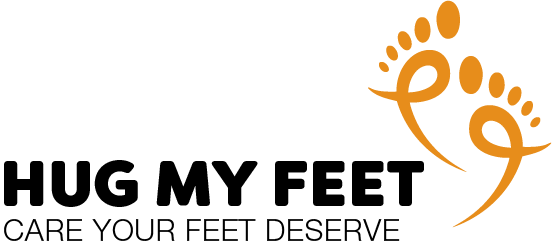
Understanding Swelling in the Lower Legs
Swelling, or edema, in the feet, ankles, and lower legs is a frequent complaint, especially among individuals who stand or sit for prolonged periods, are overweight, have circulatory disorders, or have underlying health conditions such as venous insufficiency or heart disease. When the body’s natural fluid balance is disrupted, excess fluid can accumulate in tissues, causing discomfort, heaviness, tightness, and even pain.
Left unmanaged, persistent swelling can damage skin tissues, impair circulation, and increase the risk of wounds or infections. That’s where compression therapy, most notably compression socks, can play a vital role in managing edema and preserving leg health.
What Are Compression Socks?
Compression socks are specialized elastic garments designed to apply graduated pressure to the lower limbs. They are tighter at the ankle and gradually loosen toward the calf or thigh, helping to support venous return (blood flow back to the heart) and prevent fluid pooling in the tissues.
By exerting external pressure, compression socks reduce the diameter of distended veins, enhance valve function, and increase blood flow velocity. This helps mitigate swelling, prevent venous stagnation, and relieve symptoms such as heaviness, aching, or tension in the legs.
In clinical settings, compression stockings are often used to help control swelling and optimize tissue health in patients with ulcers, wounds, or vascular disease.
Why Use Compression Socks for Swelling?
Here are some of the main benefits of using compression socks to manage swelling in the legs:
- Promote Venous Return & Prevent Fluid Buildup: The graduated pressure helps push fluid out of the lower extremities and back toward the circulatory system, reducing the accumulation of excess interstitial fluid.
- Reduce Symptoms & Improve Comfort: Many wearers report relief from leg heaviness, tightness, and fatigue, especially at the end of the day. Clinical studies show that even low to moderate compression (e.g., 12–20 mmHg) can significantly reduce evening edema.
- Support Wound Healing & Prevent Complications: In settings of chronic swelling or venous disease, controlling edema is a foundational step in wound care management. Persistent swelling can interfere with nutrient delivery and tissue repair, so compression is often part of a broader wound-care protocol.
- Maintain Results Over Time: Once swelling is reduced, maintenance wear of compression socks helps prevent rebound edema and supports tissue health in the long run.
- Noninvasive & Generally Safe (when properly used): Compared to surgical or pharmacologic approaches, compression socks are a relatively low-risk intervention, though proper sizing, application, and medical guidance are essential.
Types & Compression Levels
Compression socks come in various lengths, pressures, and styles. Here’s a quick overview:
-
Lengths
- Calf / Below-knee
- Knee-high
- Thigh-high or full-leg
- Pantyhose-style / full-length
-
Compression Classes / Pressure Levels
- Mild/Moderate support (e.g., 8–15 mmHg)
- Moderate/Firm (e.g., 15–20 mmHg, 20–30 mmHg)
- Firm / medical-grade (e.g., 30–40 mmHg, 40–50 mmHg)
- Custom prescriptions (above 50 mmHg in certain cases)
Your healthcare provider can help determine the level of compression that’s safe and appropriate for your condition.
Proper Use: When & How to Wear Them
To maximize the effectiveness of compression socks for swelling and reduce complications, follow these guidelines (many of which align with Healogics’ recommendations):
- Put them on first thing in the morning: Ideally, put them on before exiting the bed, while swelling is minimal.
- Wear them throughout the day: Keep them on during waking hours. Remove them before bathing or sleeping.
- Elevate your legs while resting: When possible, sleep or rest with your feet elevated above heart level to further reduce swelling.
- Apply carefully & avoid creases: Turn the sock inside-out partway, slide your foot and heel in, then gradually pull up toward the calf. Use rubber gloves or donning aids if needed. Wrinkles or folds can cause pressure points and skin damage.
- Replace regularly: Compression materials lose elasticity over time. Healogics advises updating stockings every 3–6 months to maintain therapeutic effect.
-
Watch for warning signs: Stop use and consult a professional if you notice:
- Increased pain, numbness, or tingling
- Color or temperature changes in toes
- New wounds or skin irritation
How Effective Are Compression Socks?
Research supports the use of compression socks in various settings:
- A controlled study found that calf-length stockings with 11–21 mmHg compression reduced or prevented evening edema in subjects over 7 hours.
- In chronic wound and edema management, compressive therapies are considered a standard component in care protocols for venous ulcers, often alongside dressings, debridement, and vascular intervention.
- Clinical and practice guidelines stress that compression must be sustained, properly fitted, and applied with care to be effective.
However, it’s not a “one size fits all” solution; these devices must be used thoughtfully, usually under the guidance of a healthcare provider.
Who Should Consider Compression Socks for Swelling?
Here are some common scenarios where compression socks may help:
- Individuals who experience leg swelling from prolonged standing or sitting (e.g., at work or during travel)
- People with chronic venous insufficiency, varicose veins, or risk of venous ulcers
- Patients recovering from surgeries or injuries involving the lower limbs
- Those with mild, intermittent swelling without an underlying contraindicating vascular disease
However, compression therapy may not be appropriate in all cases, especially for people with significant arterial disease or certain skin conditions. Always check with a healthcare provider before beginning use.
Safety Precautions & Contraindications
While compression socks are generally safe, improper use or certain conditions can make them risky:
- Poor arterial circulation: In patients with severe peripheral arterial disease, high compression may worsen circulatory compromise.
- Skin irritation, open wounds, or infections: Use caution if there are skin breakdowns or active infections.
- Severe heart failure or edema of cardiac origin: Compression may exacerbate fluid overload in some cardiac conditions.
- Diabetes with neuropathy or sensory loss: Reduced sensation may mask discomfort or injury under the socks.
- Improper sizing or incorrect tension: Ill-fitting or overly tight stockings can cause pressure injuries.
A medical evaluation, often including vascular testing, can help identify whether compression socks are safe.
Caring for Your Compression Socks
To maintain the life and effectiveness of compression socks:
- Wash regularly following the manufacturer's instructions
- Use mild detergent and avoid fabric softeners
- Air-dry flat or hang; they should not be twisted, wrung, or tumbled in heat
- Rotate between pairs to prolong elasticity
- Inspect for wear and replace when elasticity diminishes
Good care ensures the socks maintain adequate compression over time.
Tips for Choosing the Right Compression Socks
When integrating compression socks into your routine, consider these factors:
- Accurate measurement: Take measurements while lying down, in the morning when swelling is minimal.
- Compression level: Mild (8-15 mmHg) may help mild swelling; moderate or firm levels are reserved for more significant edema or medical conditions.
- Material & breathability: Look for breathable, moisture-wicking fabrics to enhance comfort.
- Ease of wearing: Consider seamless toes, zippers, and aid devices for easier use.
- Aesthetic & support features: Many options now combine medical function with modern styles.
Integrating Compression Socks into Daily Life
To maximize the benefit from your compression socks for swelling:
- Wear them consistently during waking hours
- Combine with leg elevation, periodic movement, and mild exercise
- Monitor swelling daily and adjust your habits as needed
- Follow up regularly with a vascular specialist or wound care provider
- Follow instructions carefully and discontinue use if warning signs occur
Conclusion
Swelling in the feet, ankles, and lower legs is more than a discomfort; it can interfere with mobility, skin health, and overall circulation. Compression socks for swelling offer a noninvasive, effective method to support venous return, reduce edema, and help maintain healthy tissue. When selected properly, used with care, and integrated into a comprehensive care plan, they can make a significant difference in comfort and long-term leg wellness.
HugMyFeet™ brings medical benefits and a comfortable design to those needing compression support, and offersproducts that are not just clinically sound but also stylish and fun to wear.
